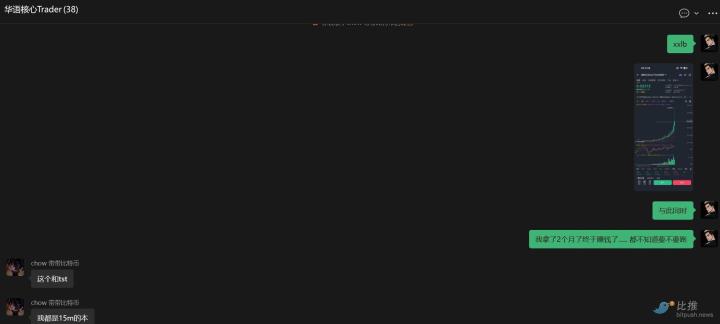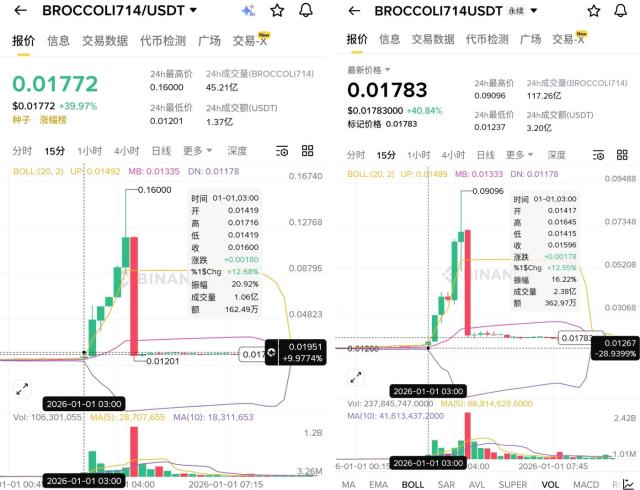Jupiter, the largest decentralized transaction aggregator on Solana, announced the airdrop details and inquiry entrance on December 2. In addition to considering the trading volume of aggregate transactions, the airdrop calculation also gives a 5x multiplier to the trading volume of limit orders and dollar cost averaging (DCA).
Maybe everyone’s impression of it still remains as a transaction aggregator, but in addition, Jupiter has also made achievements in many fields. The following will introduce Jupiter’s five major functions: transaction aggregator, limit order, average cost method, cross-chain transaction aggregator, and perpetual contract.
Trading aggregator providing the best liquidity
Compared to Uniswap’s dominance in overall liquidity on Ethereum and Curve’s advantage in stablecoin trading, there is no DEX with significantly superior liquidity on Solana. Among them, DEX Orca, the largest, has only $84 million in liquidity. In a world where liquidity is more decentralized, transaction aggregators are a necessity for almost every on-chain transaction.
As a transaction aggregator, in addition to liquidity in DEX, it also needs to integrate any place on the chain that may bring liquidity to find the optimal exchange path. For example, the anchoring stability module in MakerDAO on Ethereum is the optimal path for DAI and USDC swaps in most cases. Aggregators such as 1inch need to integrate it in time when other projects develop such functions. In terms of spot trading, Jupiter not only aggregates the liquidity of various DEXs, but also integrates the liquidity of projects such as Sanctum. Sanctum can provide instant redemption services for various SOL liquidity mortgage derivatives. After integration, Jupiter may provide SOL liquidity mortgage derivatives exchange prices that are better than all DEXs.
Limit order function
In order to increase user experience and flexibility, Jupiter also provides a limit order function similar to 1inch. When using it, you only need to enter the order information, price, and expiration date. When the price reaches the target price, the transaction will be automatically completed.

Although the experience is similar to that of a centralized exchange, it is not an order book system. This function is used by Jupiter's keeper to monitor the price on the chain using the Jupiter Price API and Birdeye API. When the user's target price is reached, the order will be automatically executed for the user.
dollar cost averaging
Since the liquidity on Solana is not excellent, when the amount of funds to be traded is large, the liquidity in DEX may not directly meet the trading needs. Jupiter has developed DCA functionality for this purpose. Through this feature, users can set a fixed time interval and investment amount, and the system will automatically purchase a specific cryptocurrency for them at the specified time.
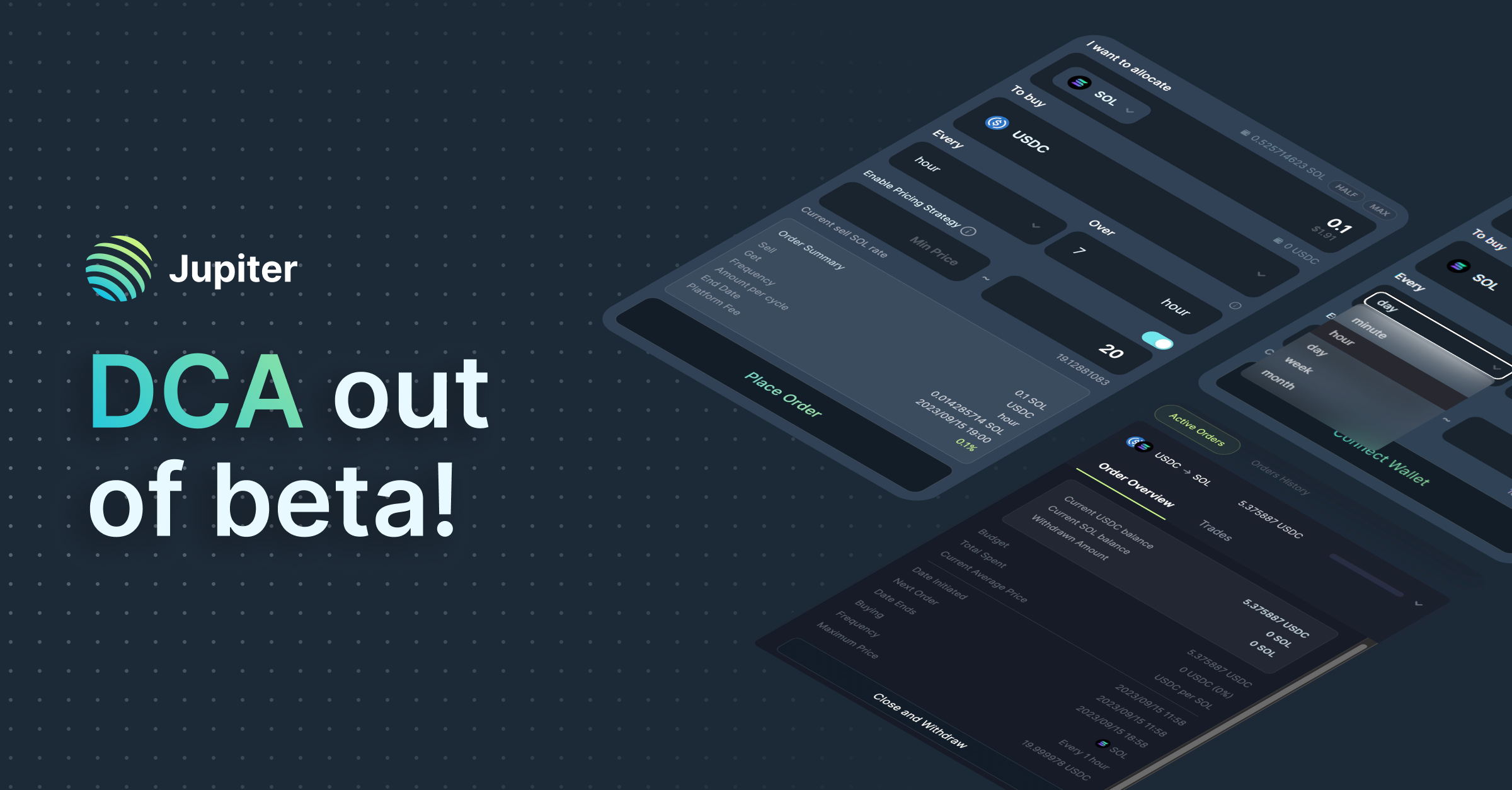
Another well-known function of the average cost method is fixed investment, which is also a common investment strategy in both traditional finance and Crypto fields. It can help users spread the risk of investment timing and avoid investing all funds at once due to market fluctuations. Fixed investment can also be combined with some trading indicators. For example, an example given by Jupiter was that during 2018-2019, starting from when BTC fell by half from its highest point, whenever the RSI was below 30, a 7-day fixed investment was carried out. Invest and end up buying BTC for an average price of $6,000.
Cross-chain transaction aggregator
Jupiter also has a cross-chain transaction aggregator, which supports the cross-chain exchange of assets on Ethereum, Optimism, Arbitrum, Base, Polygon, BNB chain and other chains into assets on the Solana chain. It integrates cross-chain bridges such as Allbridge and deBridge to provide users with cross-chain transaction services. For example, ETH on Optimism can be directly exchanged for USDC on Solana.
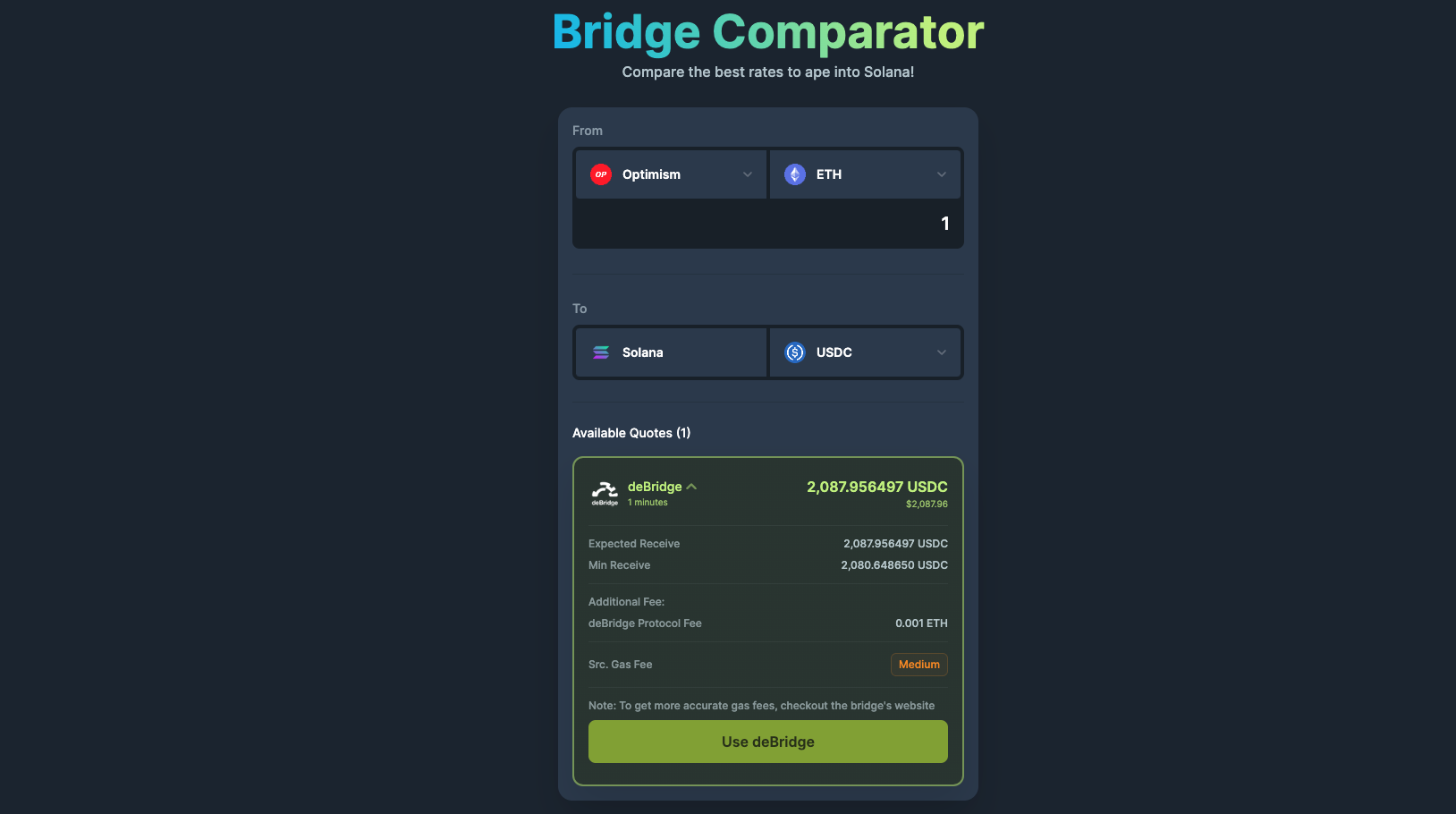
There are not many bridges that provide cross-chain services for Solana. Since Circle’s Cross-Chain Transfer Protocol (CCTP) is also about to support Solana, this may bring new liquidity to Solana. Jupiter has also announced that it will integrate CCTP. CCTP allows native USDC to be transferred seamlessly between multiple blockchains, destroying USDC on the source chain and then minting an equal amount of USDC on the target chain. However, Circle does not provide a front-end for cross-chain, but only provides cross-chain protocols integrated with CCTP on the official website. These cross-chain protocols only charge a small relay fee when providing this service. Jupiter plans to provide CCTP cross-chain services through Wormhole (Portal). Users can also use Portal or other cross-chain bridges to cross-chain native USDC.
Perpetual contract
Jupiter has also enabled the perpetual contract function, which is currently similar to GMX V1. Thanks to the integration of Jupiter Swap, any asset can be used to open a position.
Its perpetual contracts support up to 100x leverage, with no price impact or slippage when trading. Among them, the LP token is called JLP, which contains five assets: SOL, ETH, WBTC, USDC, and USDT, which means that currently only margin trading of SOL, ETH, and BTC can be achieved.
As can be seen from the weight of each asset in JLP, this service is mainly to meet the demand for SOL leverage services on the Solana chain. Among them, the target weight of stablecoins USDC and USDT totals 50%, the target weight of SOL is 34%, the target weight of ETH is 10%, and the target weight of WBTC is 6%. The weight of SOL is significantly higher than that of ETH and WBTC.
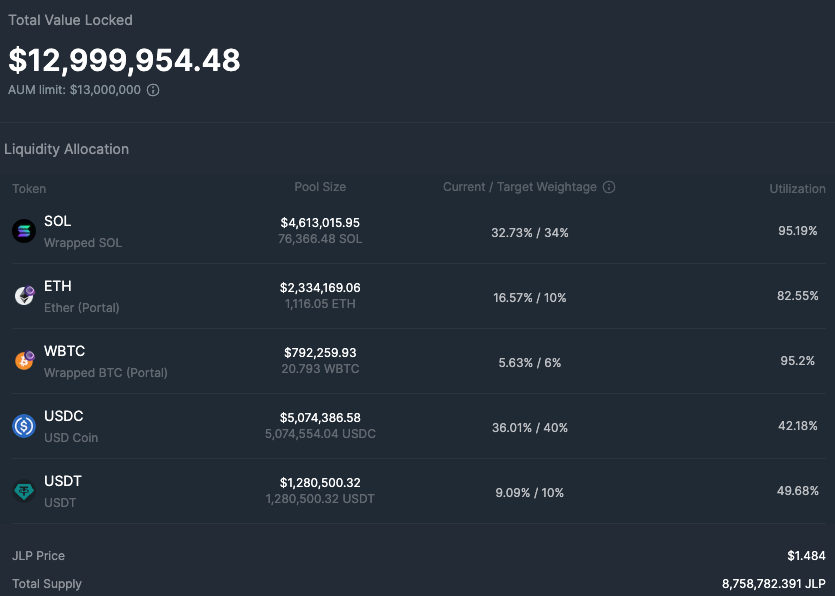
At present, this function is still in the Beta stage and has not been fully released. Now the casting of JLP has reached the upper limit. It can also be seen from the data that users have strong demand for this feature. As of December 1, the market value of JLP was US$13 million. The capital utilization rate of SOL and WBTC was above 95%. The capital utilization rate of ETH was also 82.55%. The long position has almost reached the upper limit that can be supported by this liquidity. According to the previous week's data (November 20-November 26), JLP's APR was 111.77%.
In terms of trading volume, in the past 24 hours, the trading volume of SOL-PERP was US$30.68 million, the trading volume of ETH-PERP was US$3.29 million, and the trading volume of WBTC-PERP was US$2.04 million. The trading volume generated in one day is nearly three times that of TVL, which also shows that the perpetual contract service in Jupiter is very popular among traders.
summary
In addition to being a trading aggregator on Solana, Jupiter has also developed a number of features, including limit orders and DCA functions for a better trading experience, cross-chain trading and perpetual contracts.
Perpetual contracts have been proven to be a profit-generating function on various chains, and Jupiter will also charge 30% of transaction fees, which may make up for the lack of profit margins of transaction aggregators through this approach.




